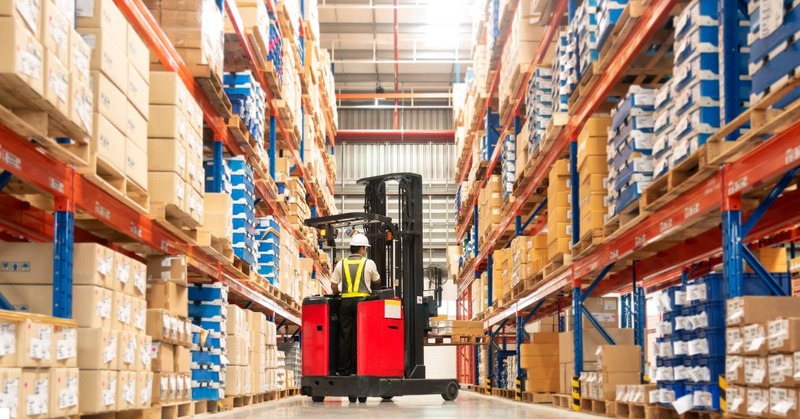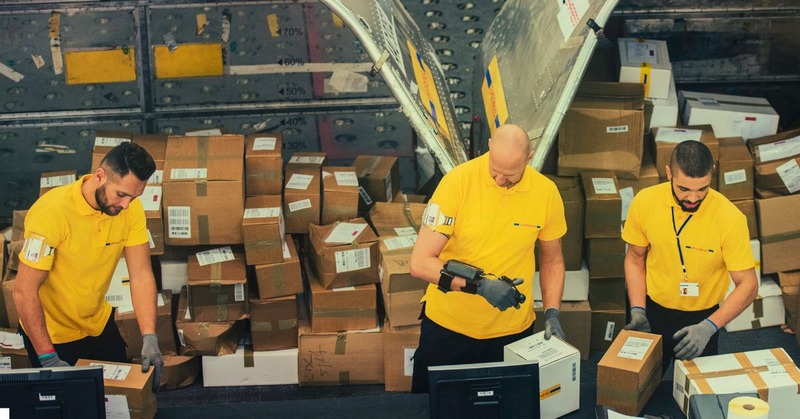Have you ever found yourself overwhelmed by a growing pile of inventory in your home-based business, unsure how to manage it all efficiently? Or perhaps you've faced the frustration of fulfilling orders slowly, leading to unhappy customers and missed sales opportunities.
These common struggles highlight the importance of effective ecommerce warehousing. As your business grows, the need for a streamlined, efficient warehousing system becomes paramount.
Whether you're just starting out or looking to scale, understanding the intricacies of ecommerce warehousing can help you overcome these challenges, optimize your operations, and keep your customers satisfied.
Let's explore the essentials of ecommerce warehousing and discover how to make it work for you.
Table of Contents
- What is Ecommerce Warehousing?
- What are the Different Types of Ecommerce Warehousing?
- What are the Benefits of Ecommerce Warehousing?
- What are the Best Ecommerce Warehousing Practices?
- FAQs
- Conclusion
What is Ecommerce Warehousing?

Ecommerce warehousing refers to the storage of goods that are sold online. This includes the management of inventory, from storing to shipping products directly to customers.
An efficient ecommerce warehouse helps streamline the entire order fulfillment process, making it quicker and more reliable, which in turn enhances customer satisfaction.
How It Works
The operation of an ecommerce warehouse is similar to other warehouse operations and involves several key activities:
Receiving and Storing Inventory

Products are delivered to the warehouse, where they are logged and stored. Warehouses are organized to facilitate easy access to items based on their demand and size characteristics.
Picking and Packing
Once an order is placed, items are picked from their respective locations and then packed. This process is often aided by warehouse management systems (WMS) that optimize picking paths and reduce errors, ensuring quick and accurate order fulfillment.
Shipping

After packing, orders are shipped to customers. Efficiency in this stage is critical for customer satisfaction and can be enhanced by strategically located warehouses that minimize delivery times.
Handling Returns
Ecommerce warehousing also involves processing returns, which requires a system to assess the condition of returned items and restock them if applicable.
What are the Different Types of Ecommerce Warehousing?

There are many types of ecommerce warehousing, but these are the most sought-after by ecommerce warehouse managers:
Third-Party Logistics (3PL)
These warehouses handle storage and distribution for businesses, allowing them to focus on other areas of their operation. They often provide additional services like inventory management and order tracking.
Dropshipping Warehouses

In this model, products are shipped directly from the supplier to the customer, bypassing the need for the retailer to hold inventory. This reduces overhead costs and simplifies the supply chain.
Consolidated Warehouses
These facilities collect shipments from multiple suppliers, consolidate them, and ship them out to a common geographical area. This type is cost-effective for small businesses and startups.
On-Demand Warehousing

This is a flexible option that allows businesses to rent storage space as needed, without long-term commitments. It's ideal for businesses with seasonal products or varying inventory levels throughout the year.
Fulfillment Centers
Though typically associated with larger operations, small business owners can also benefit from the automation and efficiency of fulfillment centers. They handle everything from storage to packing and shipping, offering a scalable solution as the business grows.
What are the Benefits of Ecommerce Warehousing?

Ecommerce warehousing offers several benefits that can significantly enhance the operational efficiency and customer satisfaction of online businesses. Here are the top three benefits:
Improved Efficiency and Speed
Automation and systematic organization in ecommerce warehouses lead to faster processing times, from receiving inventory to shipping orders. This increased efficiency ensures that customers receive their purchases quicker, enhancing the overall customer experience.
Scalability and Flexibility

As a business grows, its warehousing needs can change. Ecommerce warehousing solutions are designed to be scalable, meaning they can adjust to increased order volumes and inventory without major disruptions. This flexibility helps businesses manage peak periods, such as holiday seasons, without the need for substantial capital investment in additional space or personnel.
Cost Reduction
By optimizing storage and shipping processes, ecommerce warehousing can significantly reduce overhead costs.
This includes minimizing the need for physical retail space, reducing labor costs through automation, and optimizing logistics to cut shipping expenses. These cost savings can be redirected towards growth initiatives or price competitiveness in the market.
These benefits contribute to a more robust and dynamic business model for ecommerce entities, particularly those looking to expand their market reach while maintaining high levels of customer satisfaction.
What are the Best Ecommerce Warehousing Practices?

If you decide to get a warehouse for your ecommerce business, consider these tips on applying best practices first and foremost:
Implement a Warehouse Management System (WMS)
A robust WMS can significantly improve the efficiency of your warehouse operations. It helps in tracking inventory, creating automated workflows, and increasing overall visibility and control over the warehouse activities.
This system is especially beneficial for enhancing order accuracy and reducing inventory costs.
Efficient Picking and Packing Processes

Optimizing the picking and packing processes is essential for minimizing errors and speeding up order fulfillment. Using technology to create efficient picking routes and placing frequently ordered items closer to the packing station can save time and increase the throughput of orders processed.
Additionally, employing mobile barcode scanners can help reduce human errors, ensuring that the correct items are picked and tracked accurately.
Robust Inventory Management and Tracking
Maintaining accurate inventory levels is vital to prevent stockouts or overstocking, which can lead to lost sales or increased holding costs.
Regular checks and updates of inventory levels through an inventory management system can help ensure that physical stock matches the recorded levels and can aid in quickly addressing any discrepancies.
Integration of Systems

Ensuring that all components of your ecommerce operation—from the warehouse to your online store—are integrated can dramatically improve efficiency.
Integrations with couriers, accountancy software, and various marketplaces can automate many processes, reducing manual effort and potential errors, while enhancing customer experience.
Demand Forecasting
Understanding the patterns and fluctuations in your product demand can significantly impact your inventory management.
Utilizing historical data for demand forecasting helps in preparing for peak periods like holidays or sales events and can also adjust for sudden changes in demand due to various factors.
This proactive approach helps in maintaining the right stock levels at all times.
FAQs
What happens if you don’t implement proper ecommerce warehousing management?
Without effective ecommerce warehouse management, businesses often face challenges such as inventory inaccuracies, frequent stockouts or overstock situations, and inefficient use of warehouse space.
These issues can lead to delayed order fulfillment, increased operational costs, and reduced customer satisfaction. Inefficient warehouse management also complicates scaling operations, making it difficult to handle growth in order volumes.
How does ecommerce warehousing handle perishable goods?
Warehousing of perishable goods requires specialized storage facilities equipped with temperature control systems to maintain freshness. It also involves faster inventory turnover strategies to ensure that items are sold or shipped before they expire.
Can ecommerce warehousing be sustainable?
Yes, sustainability in ecommerce warehousing can be achieved through various practices such as using energy-efficient lighting and equipment, recycling packaging materials, and optimizing storage and transportation to reduce carbon emissions.
Conclusion
Adopting these practices can enhance warehouse management for small ecommerce businesses, ensuring smooth operations, sustainable growth, and quality customer service, even from home or smaller facilities.
Tools like Packiyo make this process more manageable by offering robust features such as real-time inventory management, automated order processing, and comprehensive insights into warehousing operations.
Read more about related topics on our blog like 'picking by voice', 'what is a bottleneck in the supply chain', and more. If you have any specific questions you want answered, feel free to contact us.
In conclusion, if you're looking to enhance your warehousing strategies, consider how Packiyo's solutions can align with your business needs, helping you optimize your operations and grow your business.
Best of luck on your ecommerce journey, and may you find success in creating a streamlined, efficient warehousing system!

